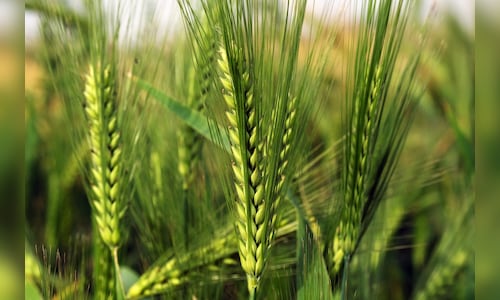Even though this represents a significant drop from last year’s record yield of 140 million tons, substantial stockpiles and relatively weak domestic demand are expected to mitigate the impact and avert a supply crisis. However, it poses a concerning scenario for a government that prioritizes food security and might necessitate a reevaluation of import policies.
As the leading producer and consumer of wheat, China is projected to harvest between 133 million and 135 million tons in 2025, based on a survey of five traders and analysts who requested anonymity when discussing sensitive topics. The lower estimate would be the smallest output since the production of 131 million tons seven years ago.
China is striving to shield its agricultural supplies from increasing geopolitical tensions, particularly the ongoing trade disputes with the US, a major exporter. In March, Beijing imposed a 15% tariff on American wheat while import demand was low. During the first four months of this year, overseas purchases fell to a seven-year low, just over 1 million tons.
However, recurrent instances of extreme weather caused by climate change are necessitating swift adjustments in supply chains. The last disruption to the wheat crop occurred two years ago, when heavy rainfall damaged the plants, resulting in imports surpassing 12 million tons, a record for that period. Wheat is a staple in Chinese diets, particularly for noodles and dumplings, and serves as a substitute grain in animal feed.
This time, the issue lies on the opposite end of the spectrum: elevated temperatures and ongoing dryness have hardened the soil and scorched crops. The damage has been most severe in northern China’s wheat-growing areas, particularly in the leading province of Henan, as well as in Shaanxi.
These two provinces were part of a group that recorded significantly below-average rainfall in May, as noted by the weather bureau. Certain regions in Henan and Shaanxi have been classified as experiencing exceptional drought — the most severe conditions according to the Chinese grading system.
Pest Concerns
Official forecasters, including the International Grains Council and the US Department of Agriculture, have yet to revise their predictions to account for the weather-related issues. Both still anticipate harvests of 140 million tons or more.
Chinese state media have highlighted the deteriorating conditions ahead of this summer’s harvest, with reports of earlier and more frequent pest infestations. In response, authorities have issued alerts, allocated emergency funds, and mobilized farmers to enhance irrigation and improve crop nutrition. However, these additional costs present a significant challenge for many farmers who are already operating on thin margins.
Although recent rains provided some relief to the parched northern regions, another heat wave is expected later in the week, with temperatures projected to reach as high as 38°C (100°F).
“The weather is really becoming unusual — it doesn’t rain when it should,” said a farmer in Hebei, another major wheat province, who identified himself only by his family name, Li. Li mentioned that while extra irrigation is costly, it has been sufficient to alleviate concerns over his wheat yield. His primary worry now is ensuring enough rainfall before starting the summer corn planting at the end of June.
China’s initiative to relocate heavy industry to its western regions is adversely affecting air quality there, despite overall improvements in the nation, according to a recent report from the Centre for Research on Energy and Clean Air.
Central banks have emerged as a powerful force driving the record-breaking bull market in gold. Although the exact extent of their purchases remains unclear, there are no indications that they will cease. When US President Donald Trump targeted China with unprecedented tariffs, the nation’s companies managed to weather the storm.



